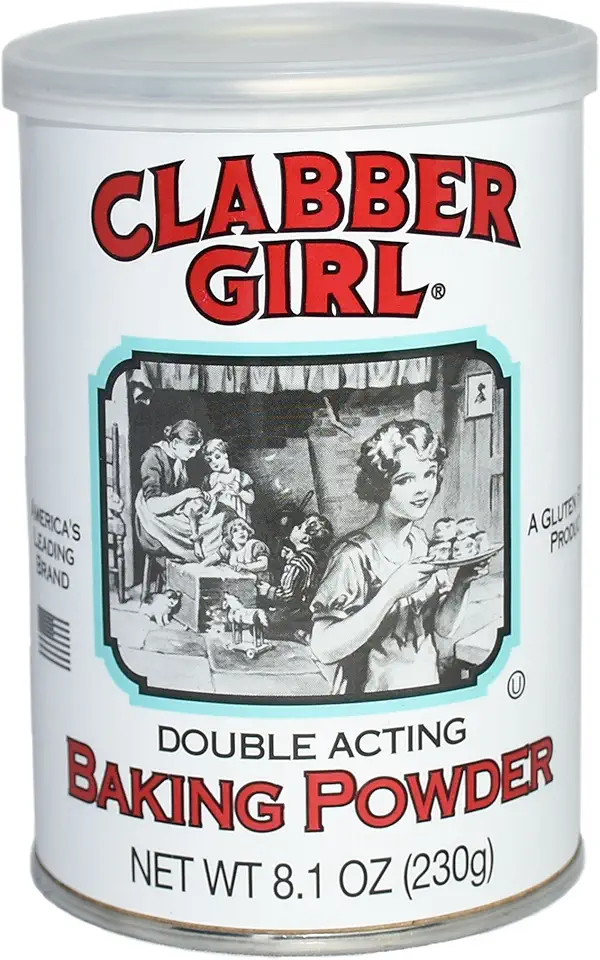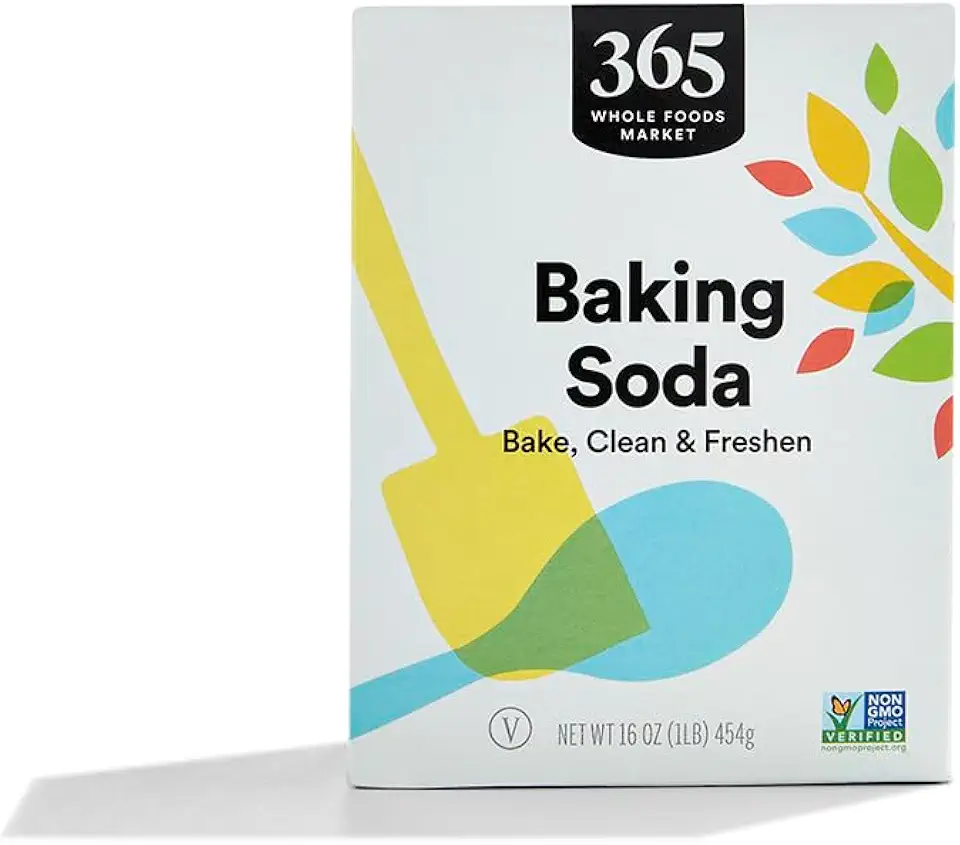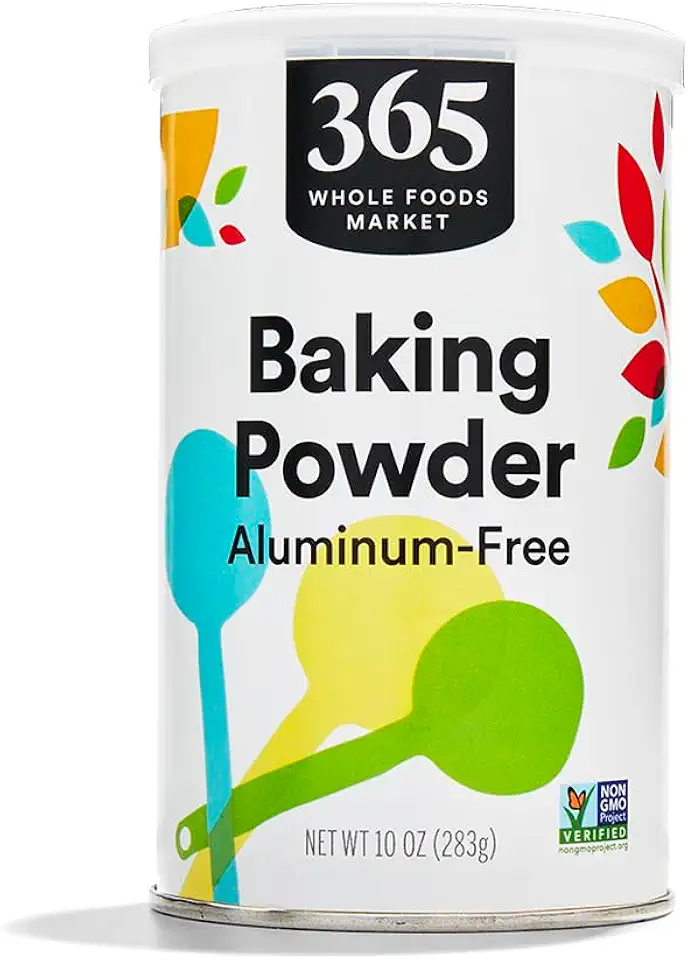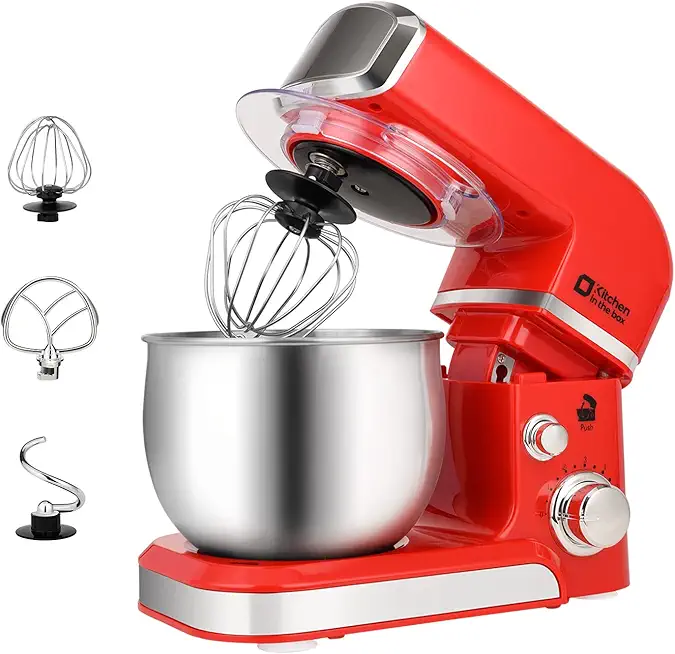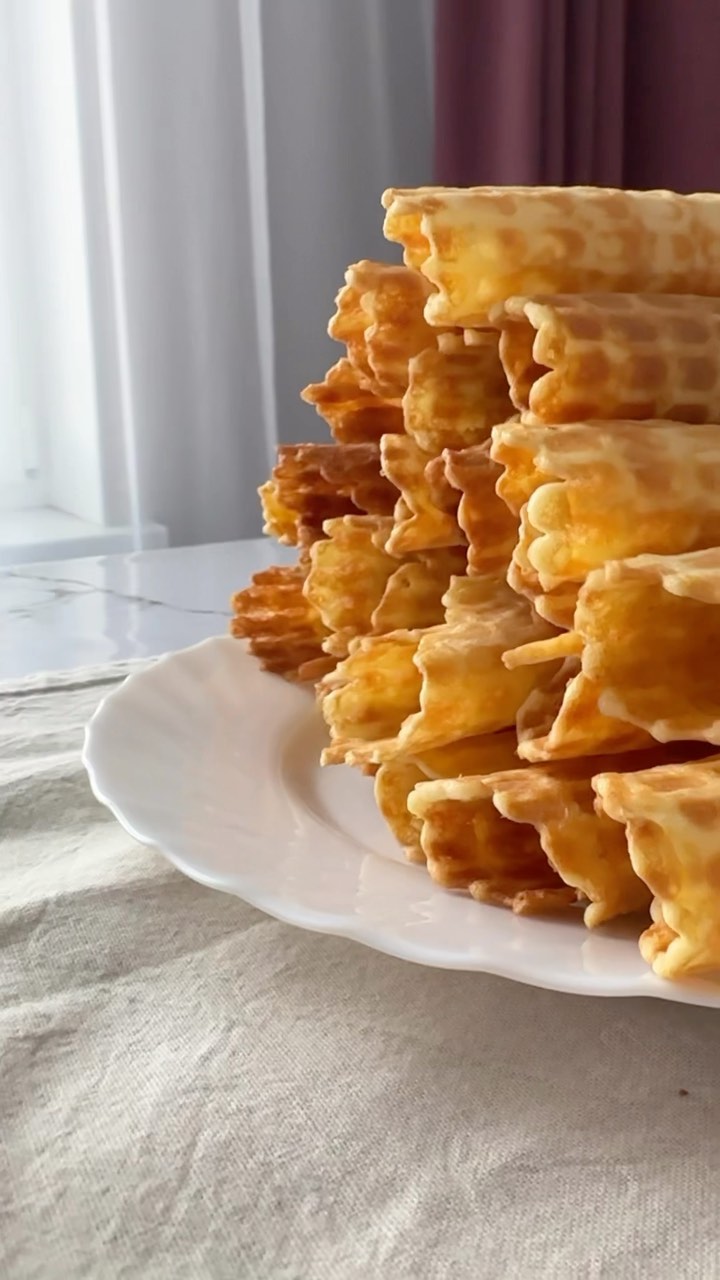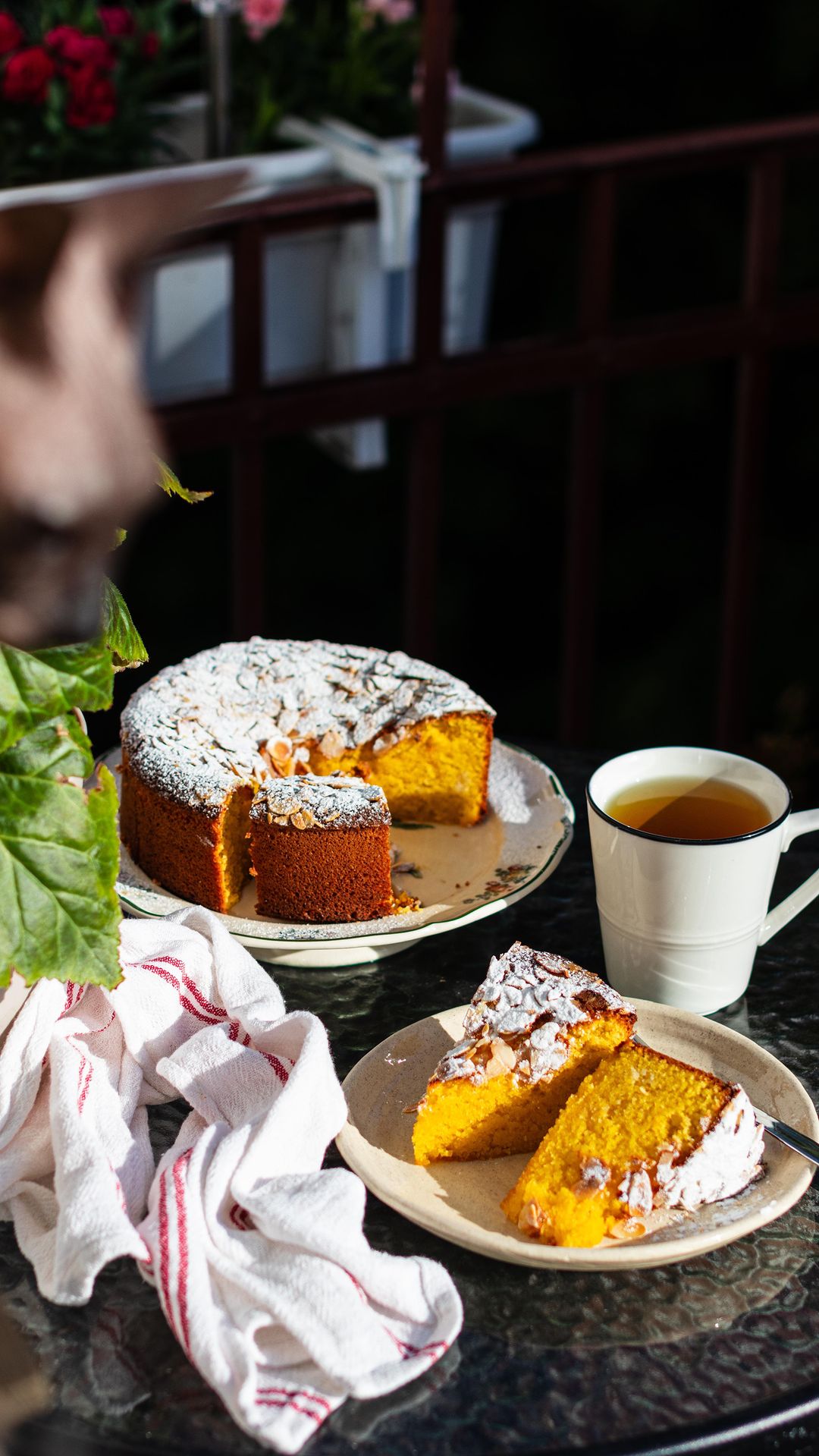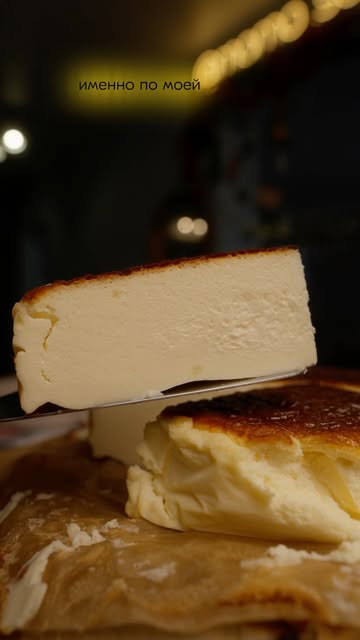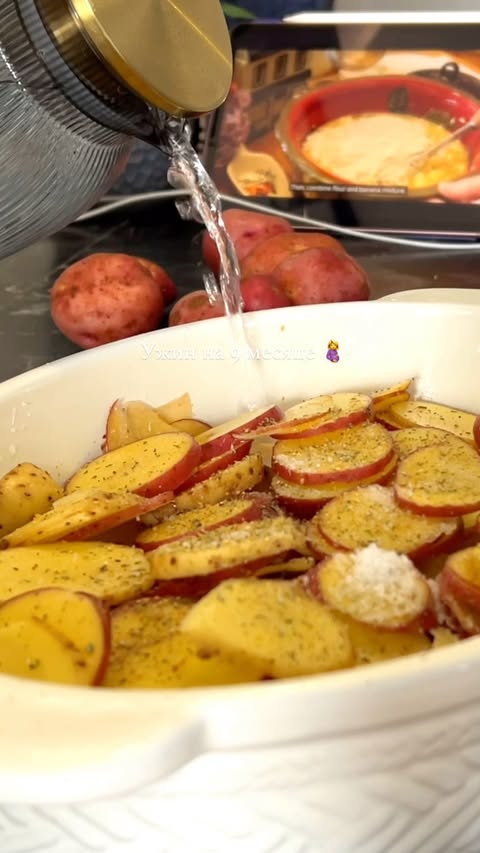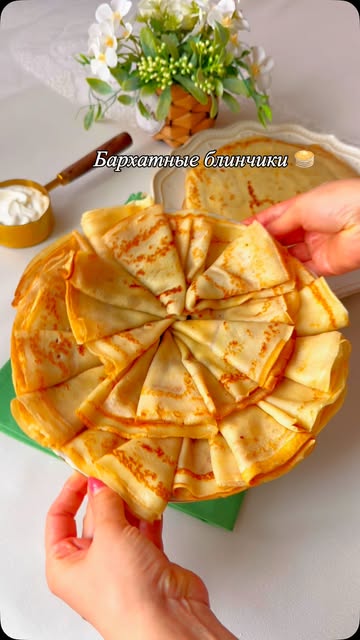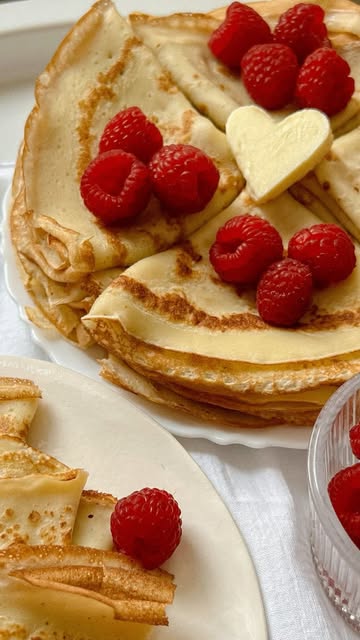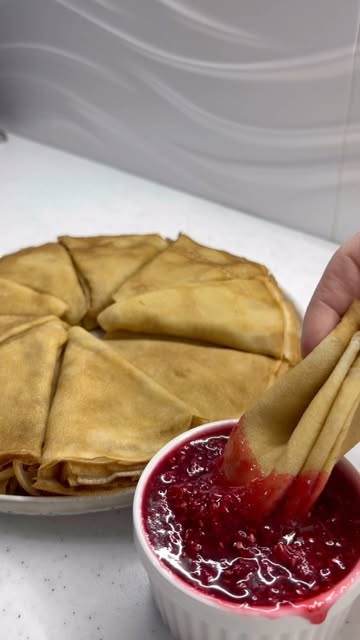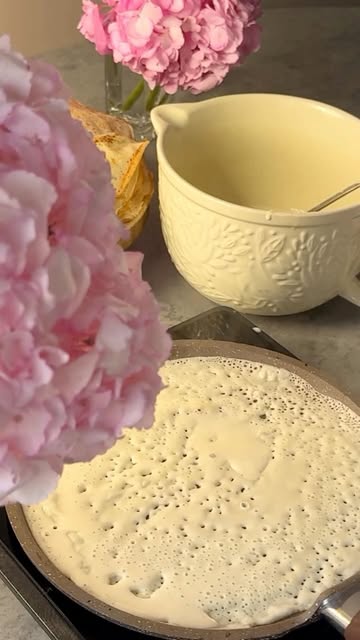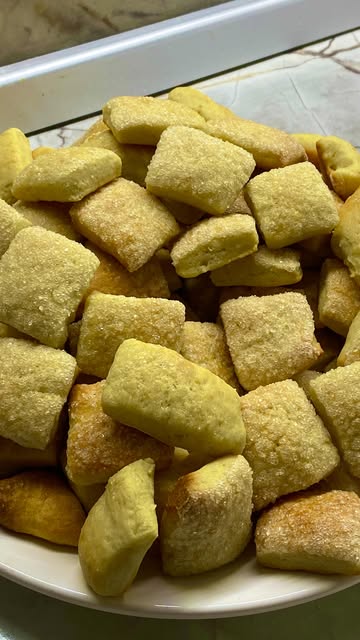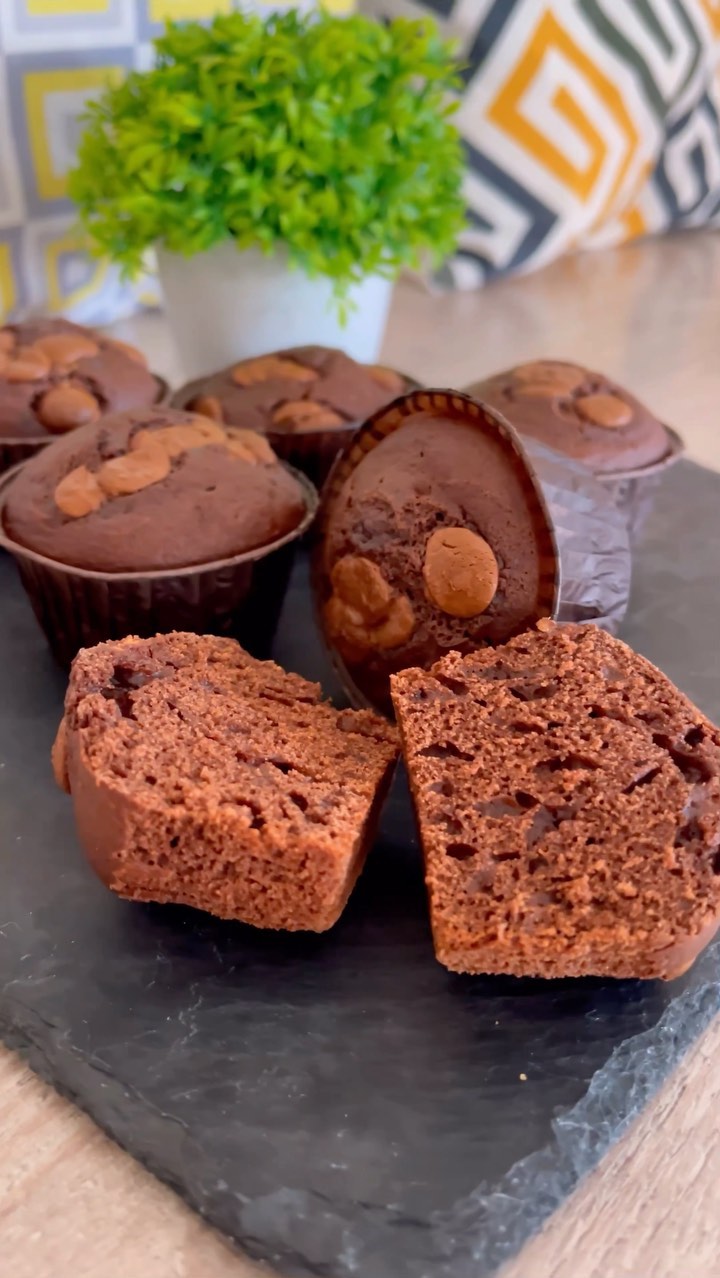Ingredients
Dry Ingredients
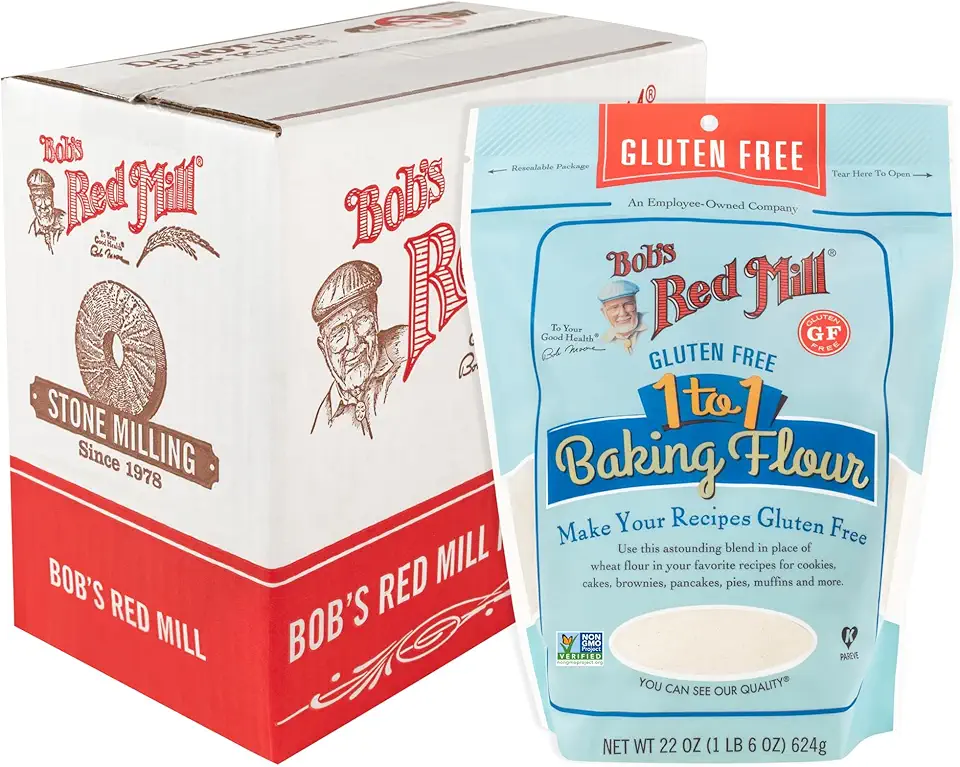 Bob's Red Mill Gluten Free 1-to-1 Baking Flour, 22 Ounce (Pack of 4)
$23.96
View details
Prime
Bob's Red Mill Gluten Free 1-to-1 Baking Flour, 22 Ounce (Pack of 4)
$23.96
View details
Prime
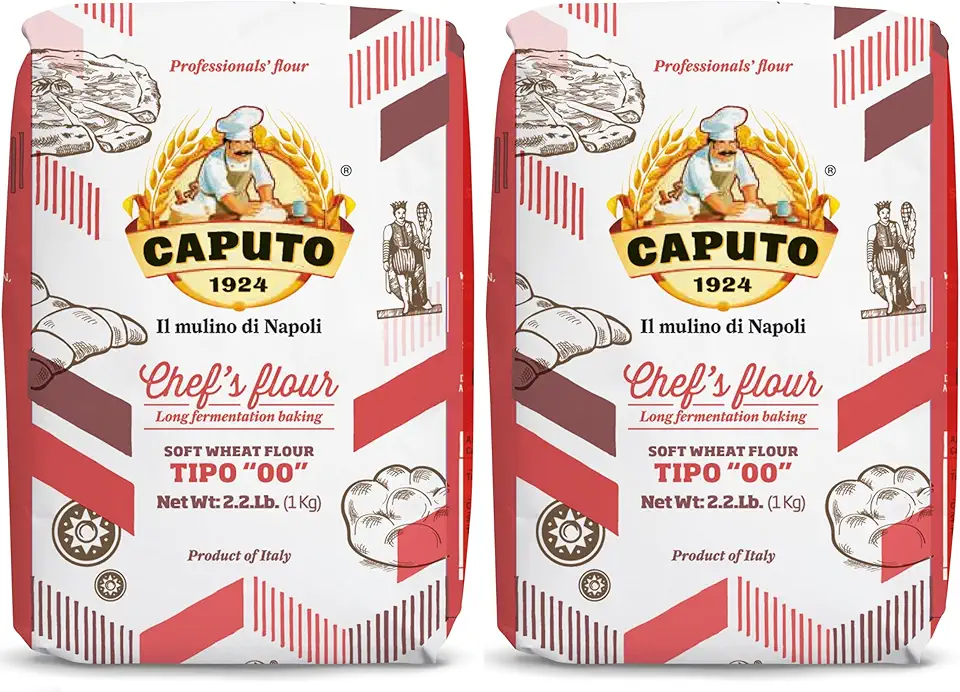 Antimo Caputo Chefs Flour - Italian Double Zero 00 - Soft Wheat for Pizza Dough, Bread, & Pasta, 2.2 Lb (Pack of 2)
$16.99
View details
Prime
best seller
Antimo Caputo Chefs Flour - Italian Double Zero 00 - Soft Wheat for Pizza Dough, Bread, & Pasta, 2.2 Lb (Pack of 2)
$16.99
View details
Prime
best seller
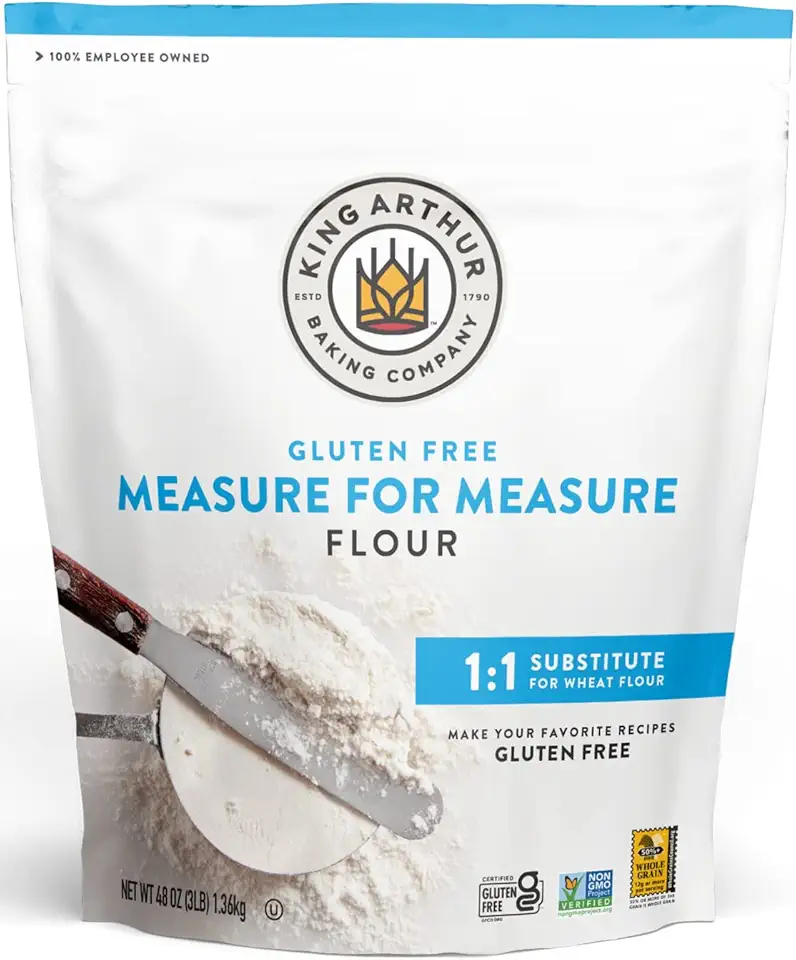 King Arthur, Measure for Measure Flour, Certified Gluten-Free, Non-GMO Project Verified, Certified Kosher, 3 Pounds, Packaging May Vary
$8.62
View details
King Arthur, Measure for Measure Flour, Certified Gluten-Free, Non-GMO Project Verified, Certified Kosher, 3 Pounds, Packaging May Vary
$8.62
View details
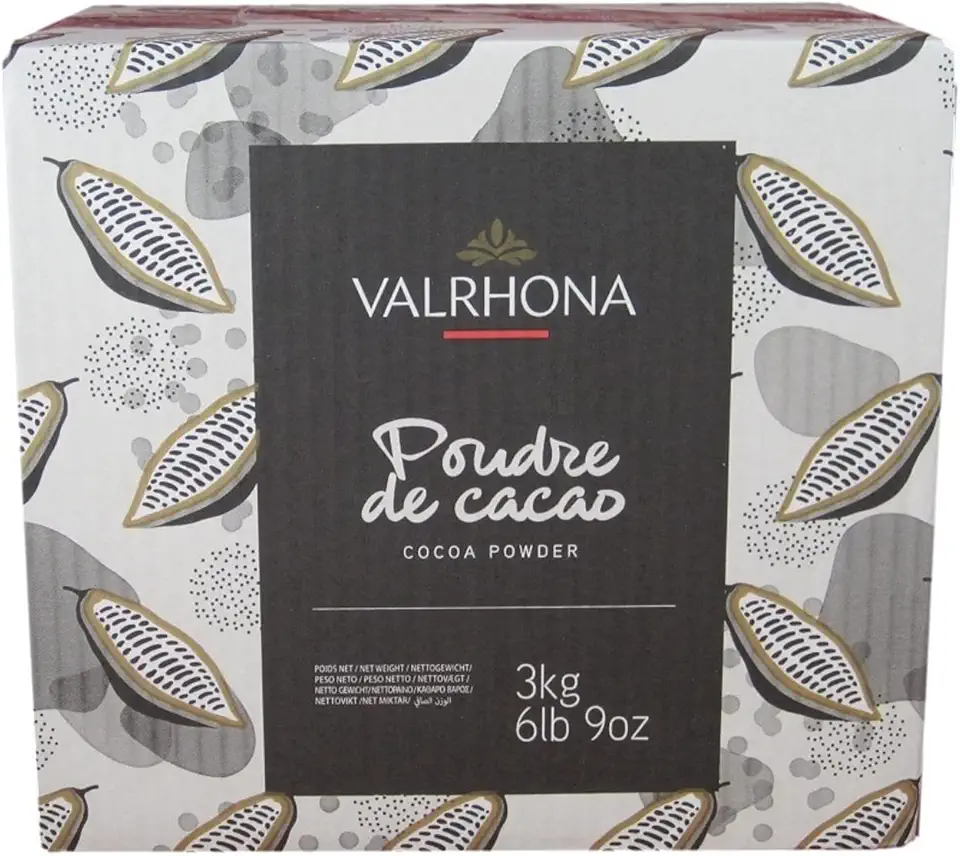 Valrhona Cocoa Powder - 3 kg
$84.95
View details
Prime
best seller
Valrhona Cocoa Powder - 3 kg
$84.95
View details
Prime
best seller
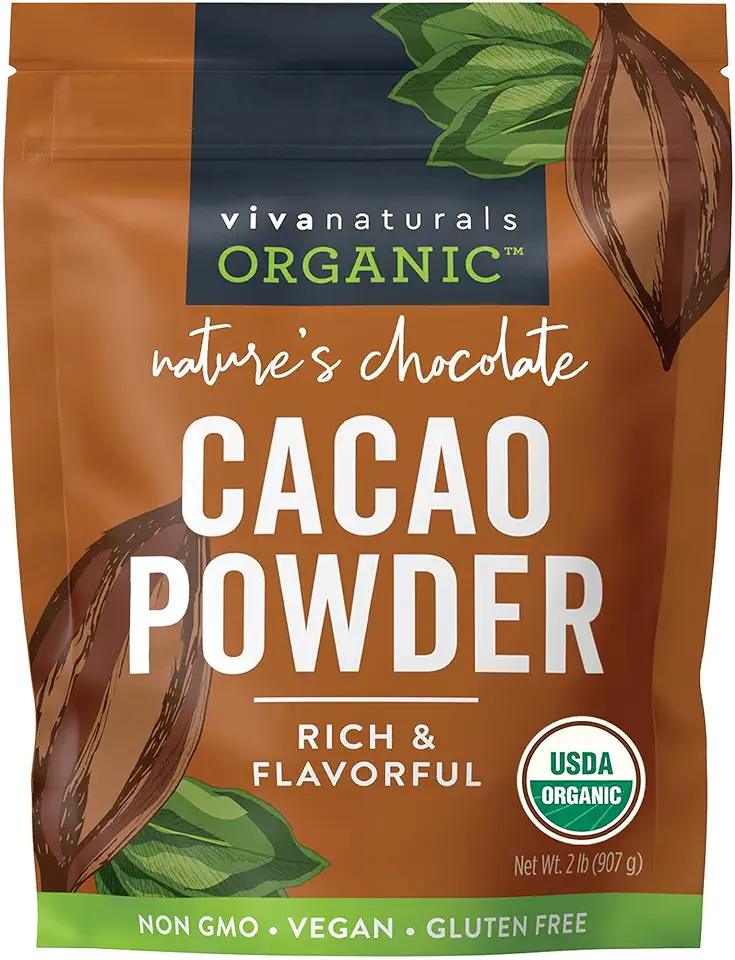 Viva Naturals Organic Cacao Powder, 2lb - Unsweetened Cocoa Powder With Rich Dark Chocolate Flavor, Perfect for Baking & Smoothies - Certified Vegan, Keto & Paleo, Non-GMO & Gluten-Free, 907 g
$20.49
View details
Viva Naturals Organic Cacao Powder, 2lb - Unsweetened Cocoa Powder With Rich Dark Chocolate Flavor, Perfect for Baking & Smoothies - Certified Vegan, Keto & Paleo, Non-GMO & Gluten-Free, 907 g
$20.49
View details
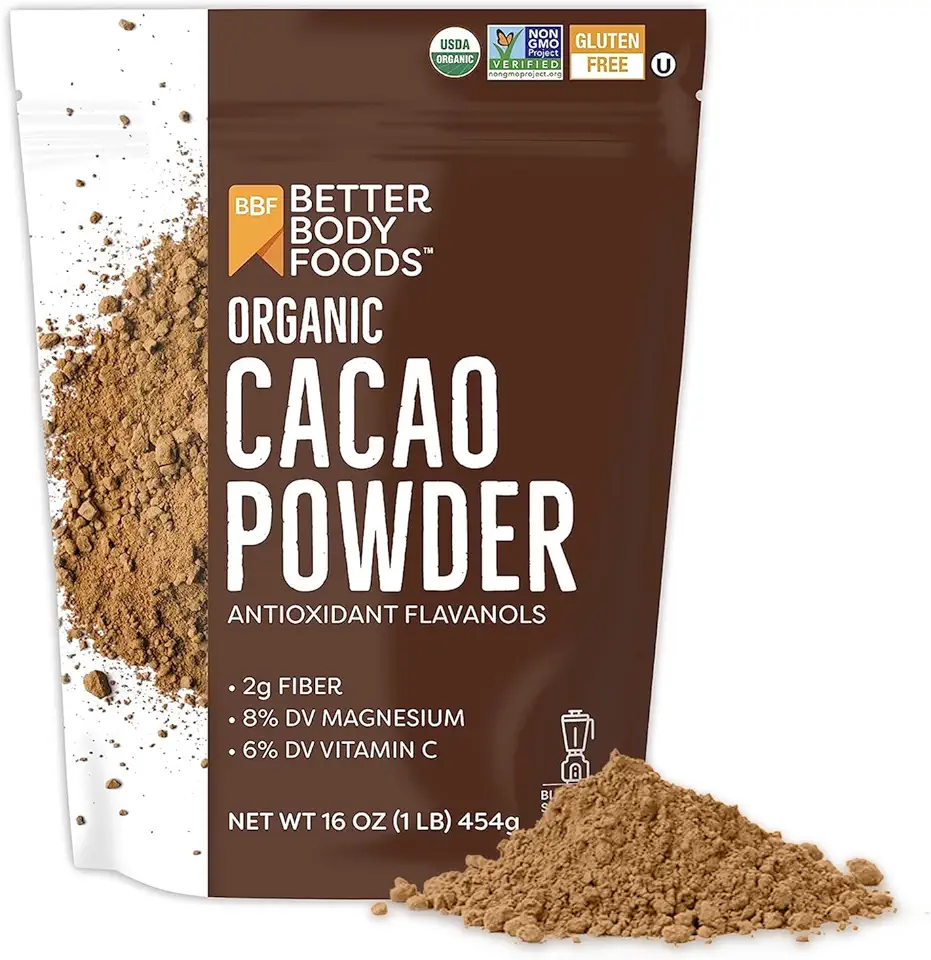 BetterBody Foods Organic Cacao Powder, Rich Chocolate Flavor, Non-GMO, Gluten-Free, Cocoa, 16 ounce, 1 lb bag
$10.41
View details
BetterBody Foods Organic Cacao Powder, Rich Chocolate Flavor, Non-GMO, Gluten-Free, Cocoa, 16 ounce, 1 lb bag
$10.41
View details
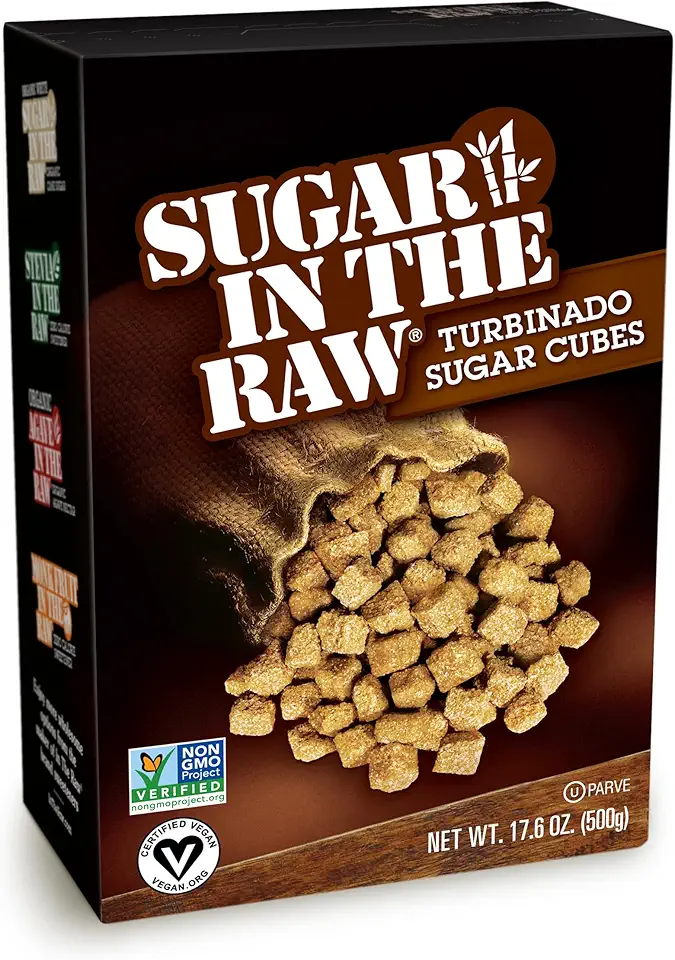 Sugar In The Raw Granulated Turbinado Cane Sugar Cubes, No Added Flavors or erythritol, Pure Natural Sweetener, Hot & Cold Drinks, Coffee, Vegan, Gluten-Free, Non-GMO,Pack of 1
$5.27
View details
Prime
Sugar In The Raw Granulated Turbinado Cane Sugar Cubes, No Added Flavors or erythritol, Pure Natural Sweetener, Hot & Cold Drinks, Coffee, Vegan, Gluten-Free, Non-GMO,Pack of 1
$5.27
View details
Prime
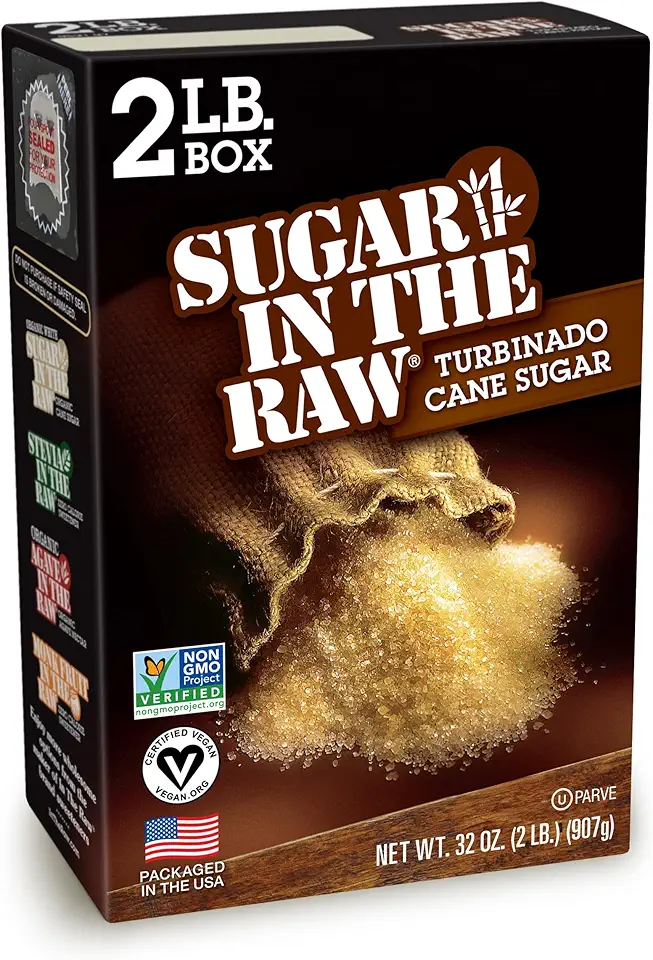 Sugar In The Raw Granulated Turbinado Cane Sugar, No Added Flavors or erythritol, Pure Natural Sweetener, Hot & Cold Drinks, Coffee, Baking, Vegan, Gluten-Free, Non-GMO, Bulk Sugar, 2lb Bag (1-Pack)
$3.74
$4.14
View details
Prime
Sugar In The Raw Granulated Turbinado Cane Sugar, No Added Flavors or erythritol, Pure Natural Sweetener, Hot & Cold Drinks, Coffee, Baking, Vegan, Gluten-Free, Non-GMO, Bulk Sugar, 2lb Bag (1-Pack)
$3.74
$4.14
View details
Prime
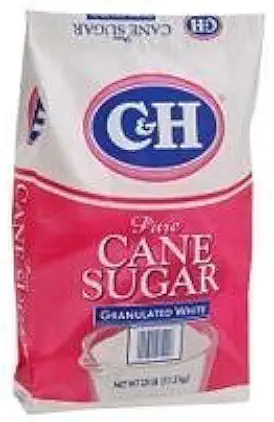 C&H Pure Cane Granulated White Sugar, 25-Pound Bags
$56.99
$49.98
View details
C&H Pure Cane Granulated White Sugar, 25-Pound Bags
$56.99
$49.98
View details
Wet Ingredients
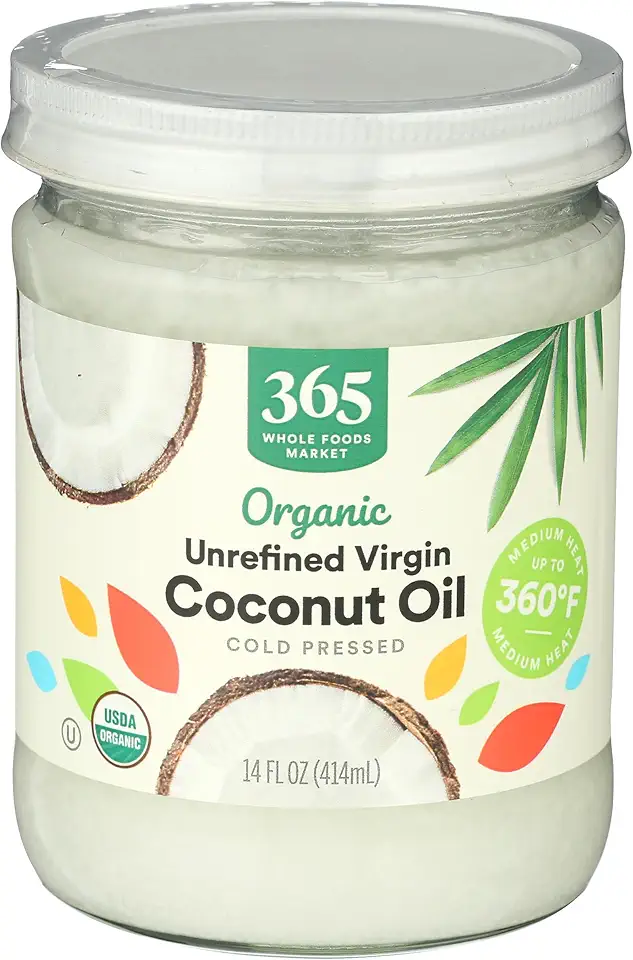 365 by Whole Foods Market, Organic Unrefined Coconut Oil Virgin, 14 Fl Oz
$15.50
View details
Prime
365 by Whole Foods Market, Organic Unrefined Coconut Oil Virgin, 14 Fl Oz
$15.50
View details
Prime
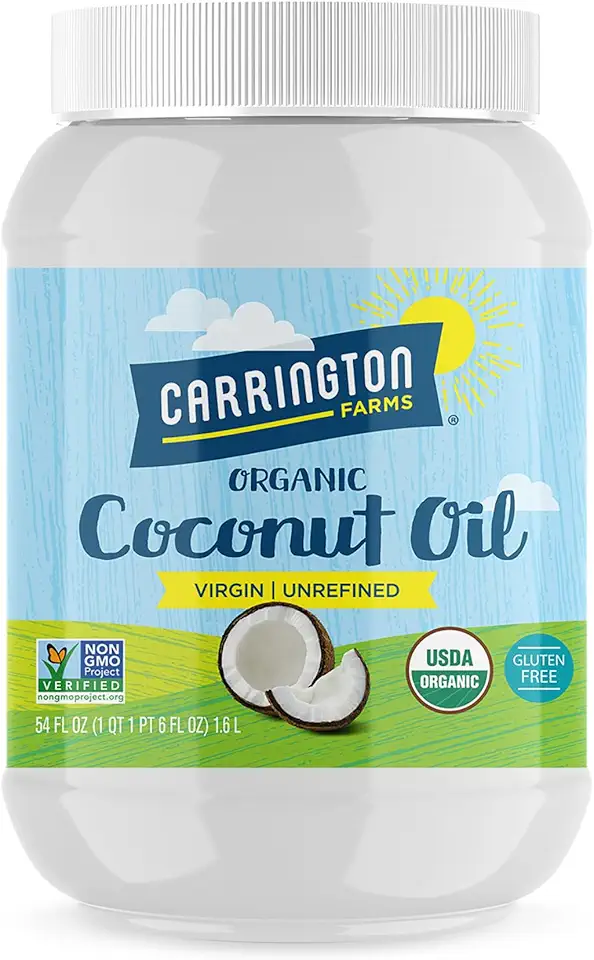 Carrington Farms Organic Virgin Cold Pressed Coconut Oil for Cooking, Nutrient Dense, Unrefined, Perfect for Baking or Sauteing Vegetables, 54 Fl Oz
$19.99
$21.95
View details
Prime
Carrington Farms Organic Virgin Cold Pressed Coconut Oil for Cooking, Nutrient Dense, Unrefined, Perfect for Baking or Sauteing Vegetables, 54 Fl Oz
$19.99
$21.95
View details
Prime
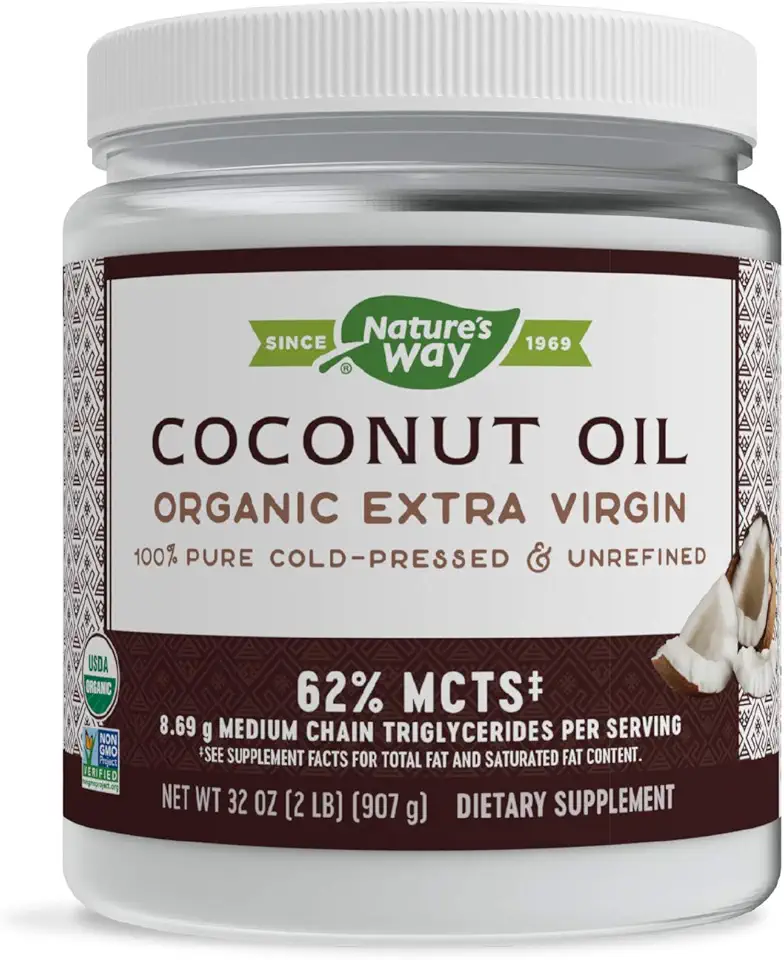 Nature's Way Organic Extra Virgin Coconut Oil, Pure Source of MCTs, Cold-Pressed, 32 Oz.
$19.67
$28.49
View details
Nature's Way Organic Extra Virgin Coconut Oil, Pure Source of MCTs, Cold-Pressed, 32 Oz.
$19.67
$28.49
View details
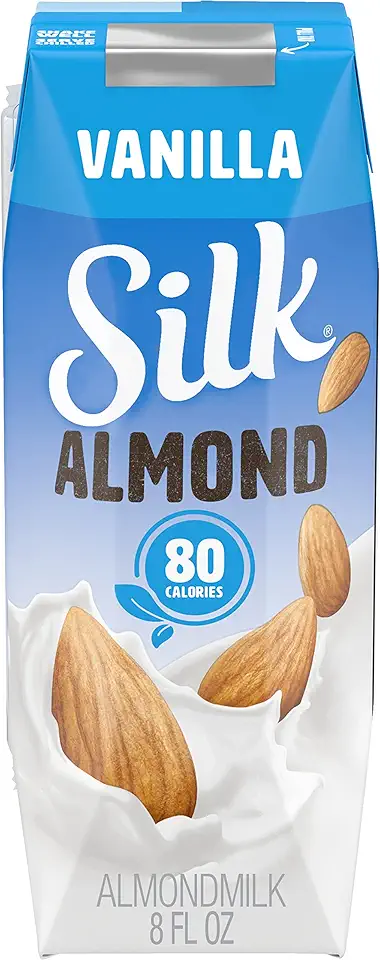 Silk Shelf-Stable Almond Milk Singles, Vanilla, Dairy-Free, Vegan, Non-GMO Project Verified, 8 Oz, (Pack of 18)
$39.68
View details
Prime
best seller
Silk Shelf-Stable Almond Milk Singles, Vanilla, Dairy-Free, Vegan, Non-GMO Project Verified, 8 Oz, (Pack of 18)
$39.68
View details
Prime
best seller
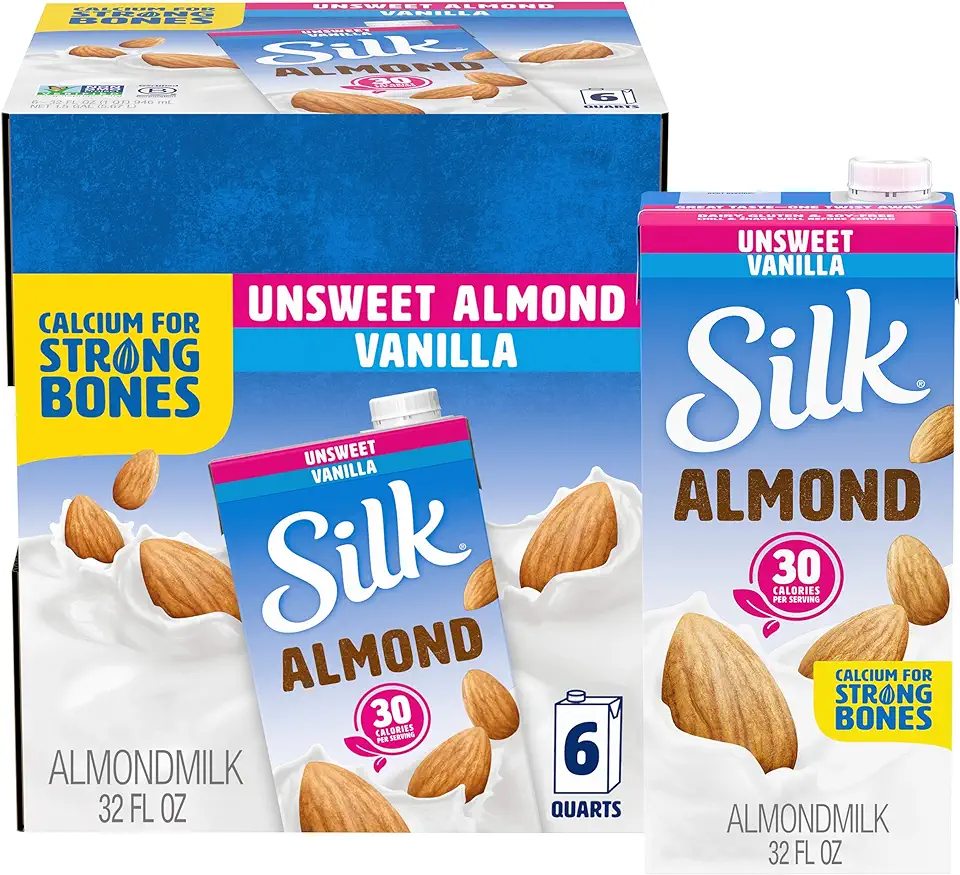 Silk Shelf-Stable Almond Milk, Unsweetened Vanilla, Dairy-Free, Vegan, Non-GMO Project Verified, 1 Quart (Pack of 6)
$12.98
View details
Prime
Silk Shelf-Stable Almond Milk, Unsweetened Vanilla, Dairy-Free, Vegan, Non-GMO Project Verified, 1 Quart (Pack of 6)
$12.98
View details
Prime
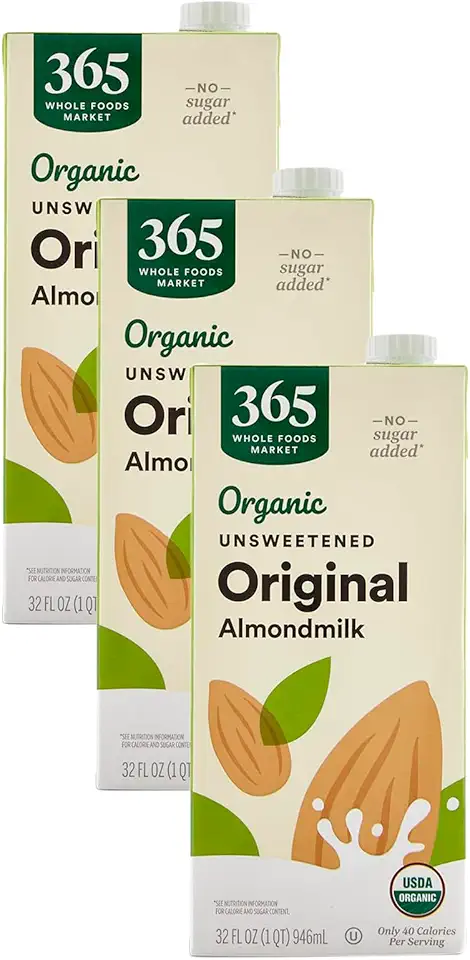 365 by Whole Foods Market, Organic Unsweetened Almond Milk, 32 Fl Oz (Pack of 3)
$9.87
View details
365 by Whole Foods Market, Organic Unsweetened Almond Milk, 32 Fl Oz (Pack of 3)
$9.87
View details
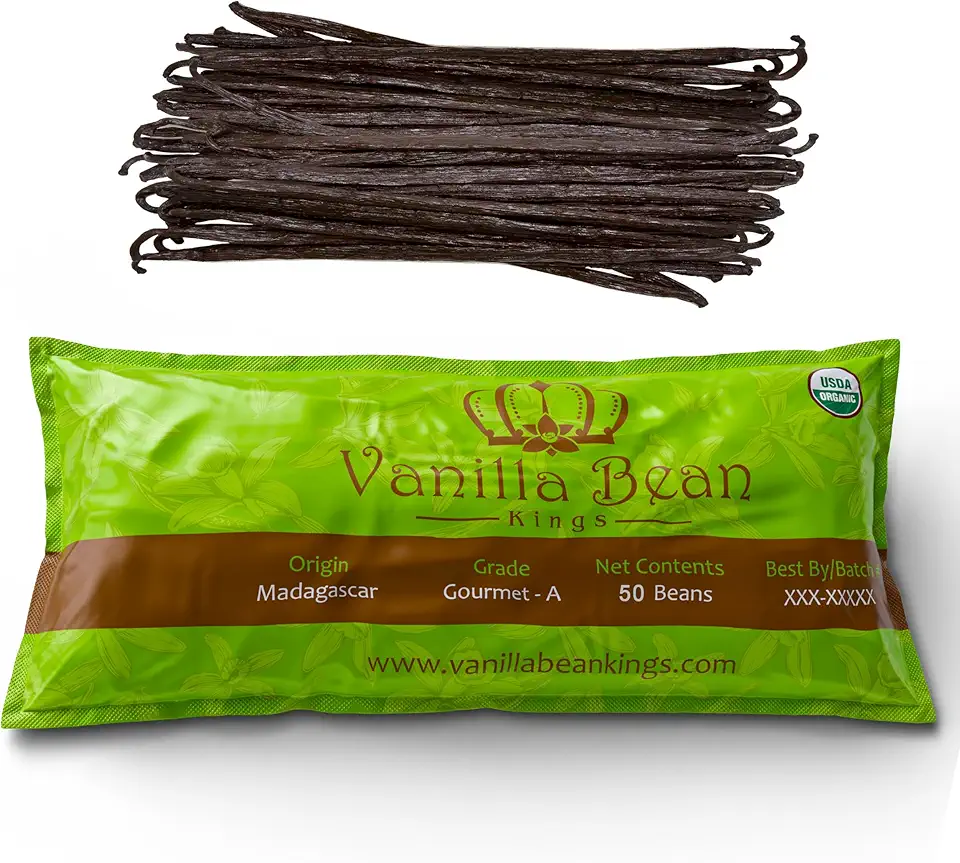 50 Organic Madagascar Vanilla Beans. Whole Grade A Vanilla Pods for Vanilla Extract and Baking
$39.99
View details
Prime
50 Organic Madagascar Vanilla Beans. Whole Grade A Vanilla Pods for Vanilla Extract and Baking
$39.99
View details
Prime
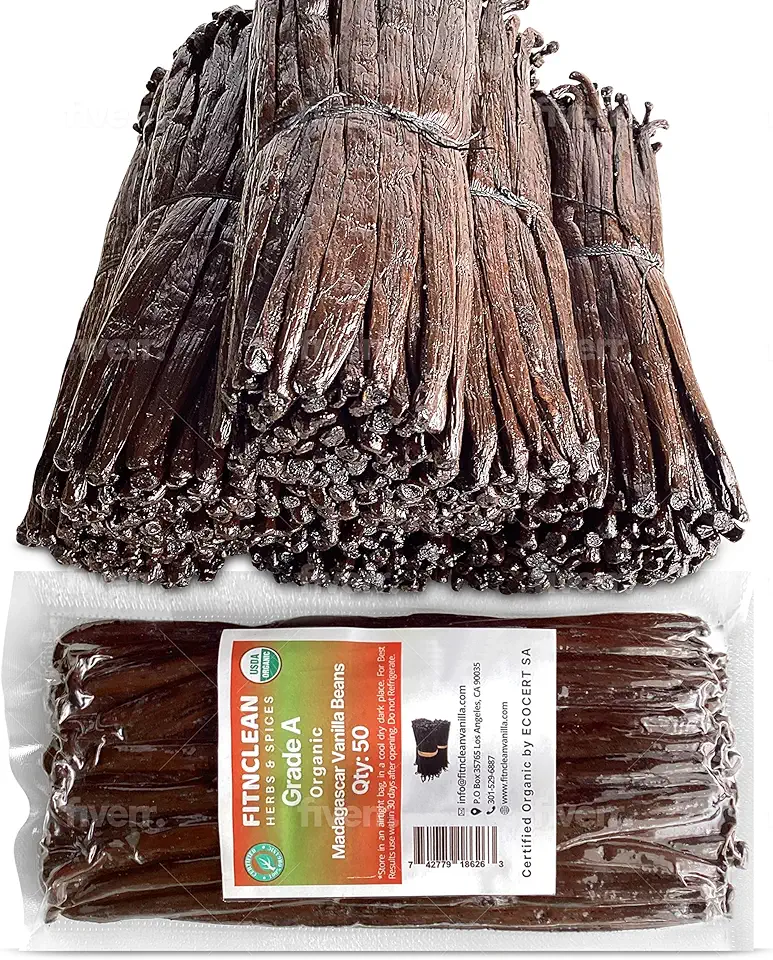 50 Organic Grade A Madagascar Vanilla Beans. Certified USDA Organic for Extract and all things Vanilla by FITNCLEAN VANILLA. ~5" Bulk Fresh Bourbon NON-GMO Pods.
$37.99
View details
Prime
50 Organic Grade A Madagascar Vanilla Beans. Certified USDA Organic for Extract and all things Vanilla by FITNCLEAN VANILLA. ~5" Bulk Fresh Bourbon NON-GMO Pods.
$37.99
View details
Prime
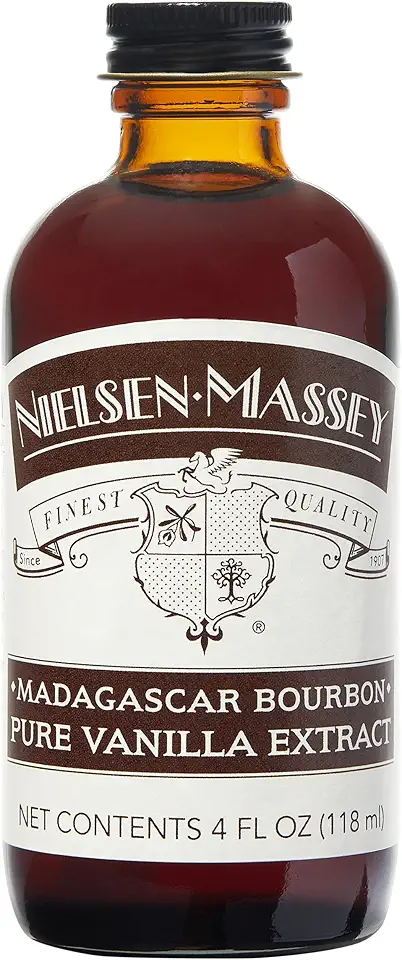 Nielsen-Massey Madagascar Bourbon Pure Vanilla Extract for Baking and Cooking, 4 Ounce Bottle
$19.95
View details
Nielsen-Massey Madagascar Bourbon Pure Vanilla Extract for Baking and Cooking, 4 Ounce Bottle
$19.95
View details
Instructions
Step 1
In a large mixing bowl, sift together the all-purpose flour, cocoa powder, granulated sugar, baking powder, and salt. This will ensure that all the dry ingredients are well combined and free of lumps.
Once sifted, mix the ingredients thoroughly with a whisk or a spatula to evenly distribute them.
Step 2
In another bowl, combine the melted coconut oil, non-dairy milk, and vanilla extract. Whisk these together until they are well mixed. Make sure the coconut oil is not too hot to avoid cooking the other ingredients.
The mixture should be smooth and creamy, with no separation between the oil and the liquids.
Step 3
Slowly pour the wet mixture into the bowl of dry ingredients. Gently fold them together using a spatula until just combined. Be careful not to overmix as this can lead to tough cookies.
Your dough should be thick and slightly sticky. If it seems too dry, you may add a teaspoon of non-dairy milk.
Step 4
Take about a tablespoon of dough and roll it into a balls. Place them on a lined baking sheet, spacing them about 2 inches apart. Using your thumb or the back of a spoon, create an indentation in each ball to form a nest shape.
This will hold the filling later and give your cookies their unique appearance.
Step 5
Preheat your oven to 180 degrees Celsius (350 degrees Fahrenheit). Once heated, place the baking sheet with cookie dough into the oven.
Bake for about 12-15 minutes, or until the edges are set but the centers are still soft. Let them cool on the baking sheet for a few minutes before transferring to a wire rack to cool completely.
Step 6
Once the cookies have cooled, feel free to fill the indentations with melted chocolate or your chosen filling. You could even add some sprinkles or nuts on top for extra decoration.
Serve these delicious vegan chocolate nest cookies at your next gathering or enjoy them as a treat on your own. They are sure to impress everyone!
Servings
Equipment
Choose a large mixing bowl for easily combining your ingredients. A glass or stainless steel bowl is ideal for durability and easy cleaning.
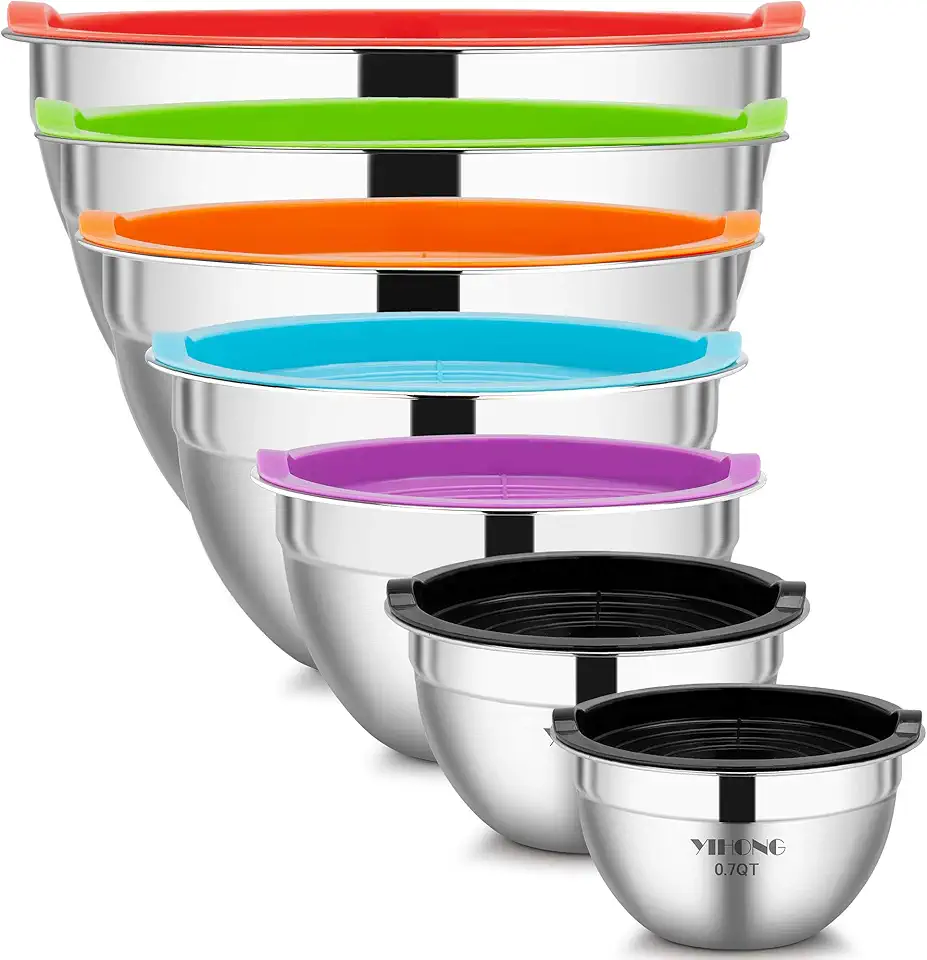 YIHONG 7 Piece Mixing Bowls with Lids for Kitchen, Stainless Steel Mixing Bowls Set Ideal for Baking, Prepping, Cooking and Serving Food, Nesting Metal Mixing Bowls for Space Saving Storage
$27.99
$35.99
View details
Prime
best seller
YIHONG 7 Piece Mixing Bowls with Lids for Kitchen, Stainless Steel Mixing Bowls Set Ideal for Baking, Prepping, Cooking and Serving Food, Nesting Metal Mixing Bowls for Space Saving Storage
$27.99
$35.99
View details
Prime
best seller
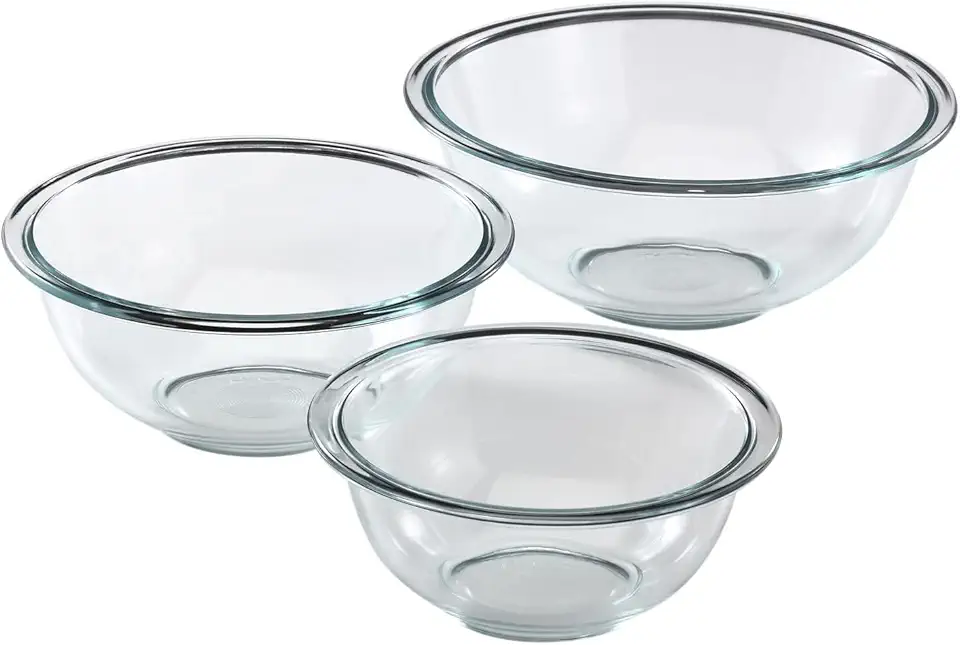 Pyrex Glass, 3-Piece, 3 PC Mixing Bowl Set
$17.53
View details
Prime
Pyrex Glass, 3-Piece, 3 PC Mixing Bowl Set
$17.53
View details
Prime
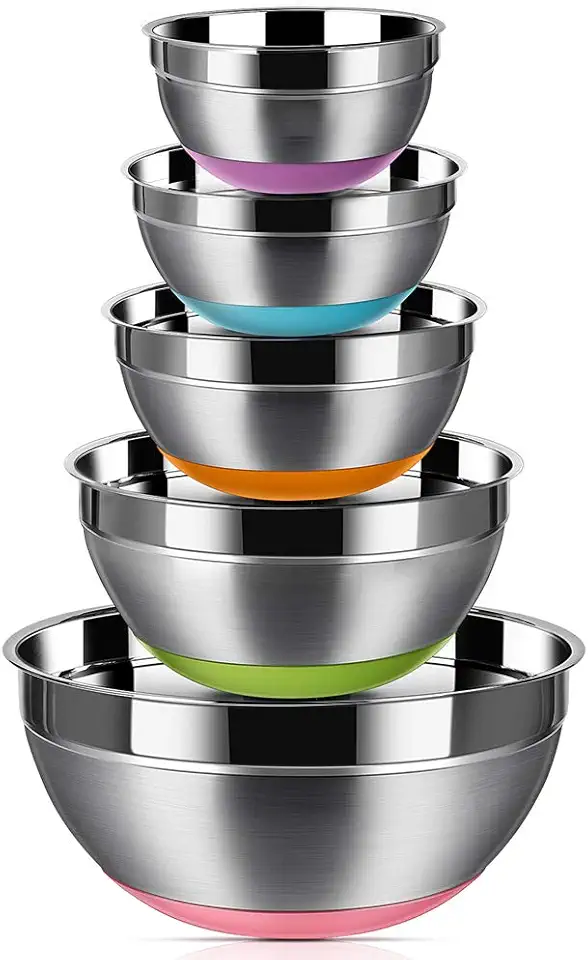 REGILLER Stainless Steel Mixing Bowls (Set of 5), Non Slip Colorful Silicone Bottom Nesting Storage Bowls, Polished Mirror Finish For Healthy Meal Mixing and Prepping 1.5-2 - 2.5-3.5 - 7QT (Colorful)
$26.99
View details
REGILLER Stainless Steel Mixing Bowls (Set of 5), Non Slip Colorful Silicone Bottom Nesting Storage Bowls, Polished Mirror Finish For Healthy Meal Mixing and Prepping 1.5-2 - 2.5-3.5 - 7QT (Colorful)
$26.99
View details
A standard baking sheet will do the trick, but consider using a parchment-lined one to prevent sticking and ensure even baking.
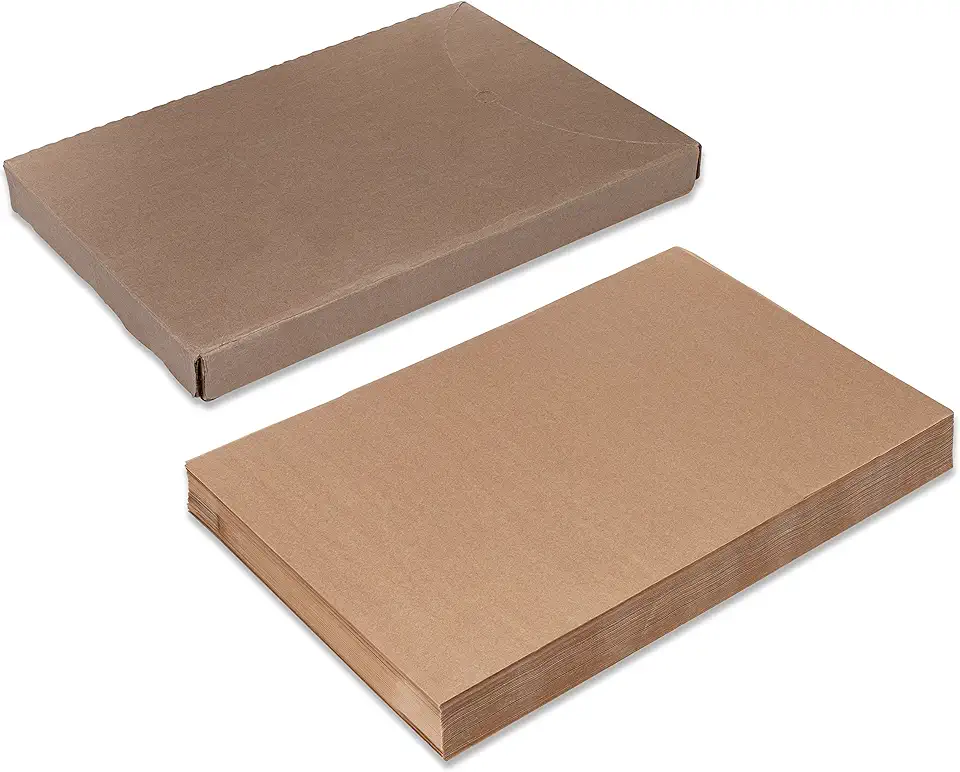 Paterson Paper 16" x 24" Full Size Unbleached Chromium-Free Reusable Baking Parchment Paper Sheets Commercial Bun/Sheet Pan Liners - 1000/Case - 425F - Non-Stick/Grease-Resistant
$169.58
View details
Prime
best seller
Paterson Paper 16" x 24" Full Size Unbleached Chromium-Free Reusable Baking Parchment Paper Sheets Commercial Bun/Sheet Pan Liners - 1000/Case - 425F - Non-Stick/Grease-Resistant
$169.58
View details
Prime
best seller
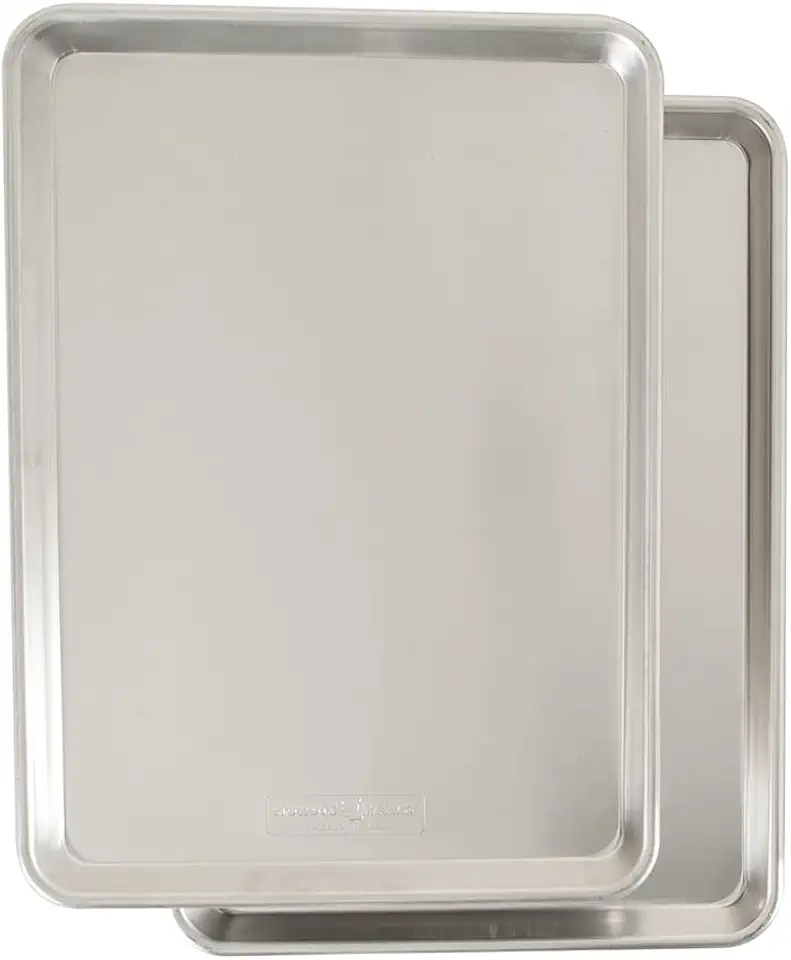 Nordic Ware Naturals Half Sheet, 2-Pack, Natural
$37.80
View details
Prime
Nordic Ware Naturals Half Sheet, 2-Pack, Natural
$37.80
View details
Prime
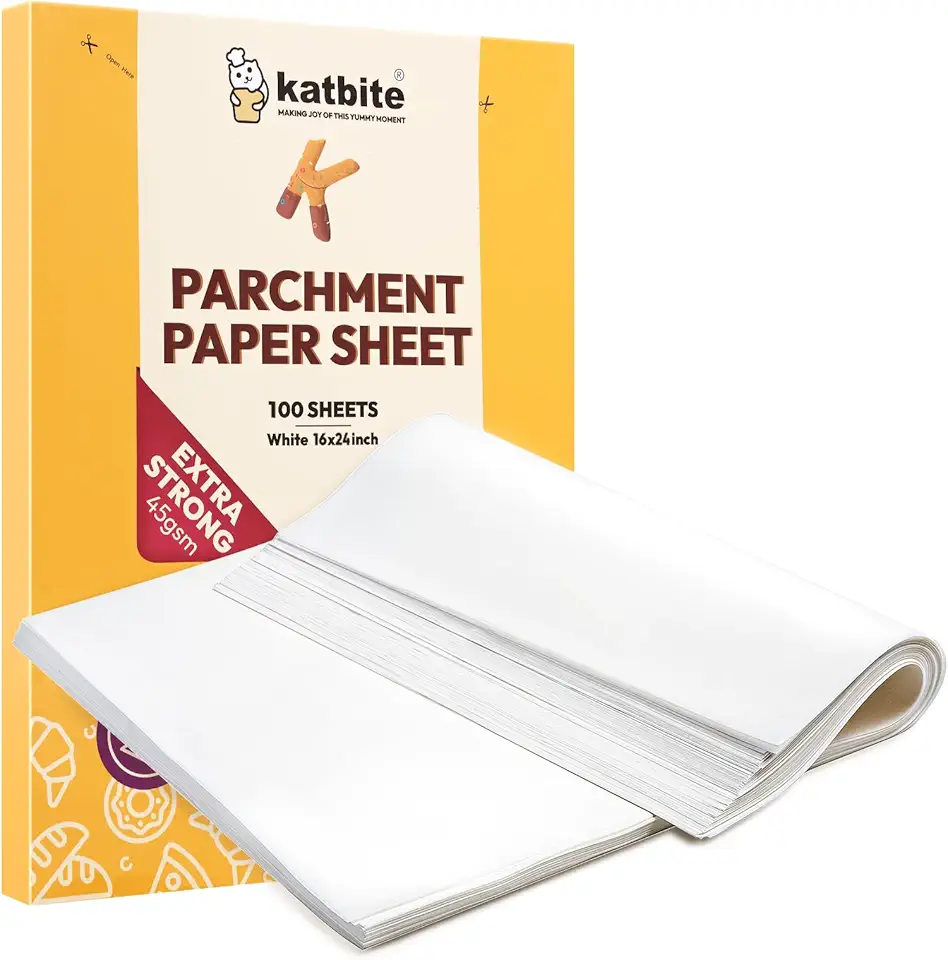 Katbite 16x24 inch Heavy Duty Parchment Paper Sheets, 100Pcs Precut Non-Stick Full Parchment Sheets for Baking, Cooking, Grilling, Frying and Steaming, Full Sheet Baking Pan Liners, Commercial Baking
$18.99
$25.99
View details
Katbite 16x24 inch Heavy Duty Parchment Paper Sheets, 100Pcs Precut Non-Stick Full Parchment Sheets for Baking, Cooking, Grilling, Frying and Steaming, Full Sheet Baking Pan Liners, Commercial Baking
$18.99
$25.99
View details
A whisk is great for small batches, but an electric mixer can save time and effort, especially for larger mixtures!
Ensure your measurements are accurate for the best results. Invest in a good set for both dry and wet ingredients.
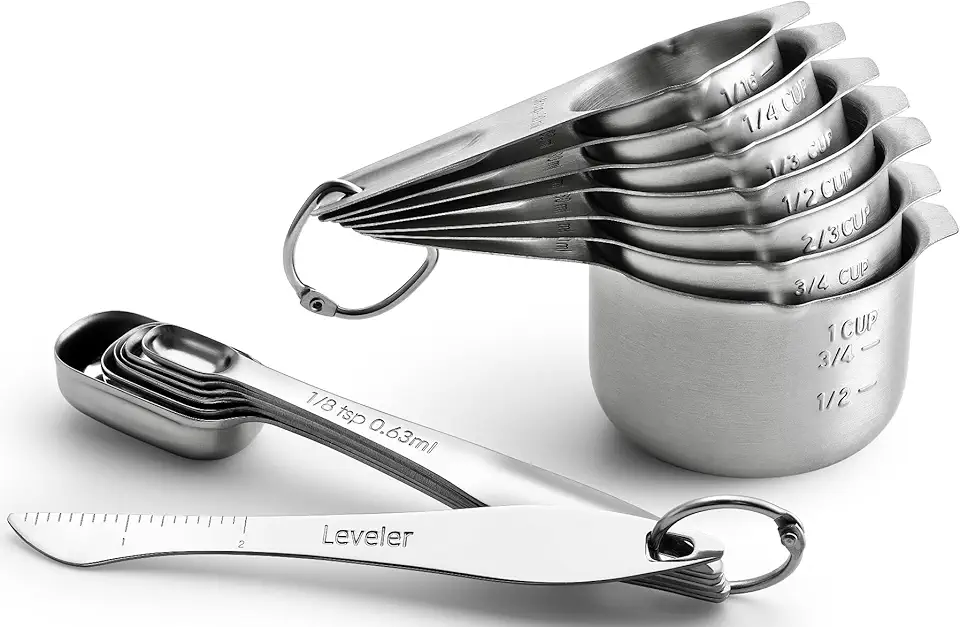 Spring Chef Stainless Steel Measuring Cups and Measuring Spoons Set of 14 with Leveler, Nesting Kitchen Metal Measuring Cups and Spoons Set for Dry and Liquid Ingredients, Perfect for Cooking & Baking
$21.99
View details
Prime
Spring Chef Stainless Steel Measuring Cups and Measuring Spoons Set of 14 with Leveler, Nesting Kitchen Metal Measuring Cups and Spoons Set for Dry and Liquid Ingredients, Perfect for Cooking & Baking
$21.99
View details
Prime
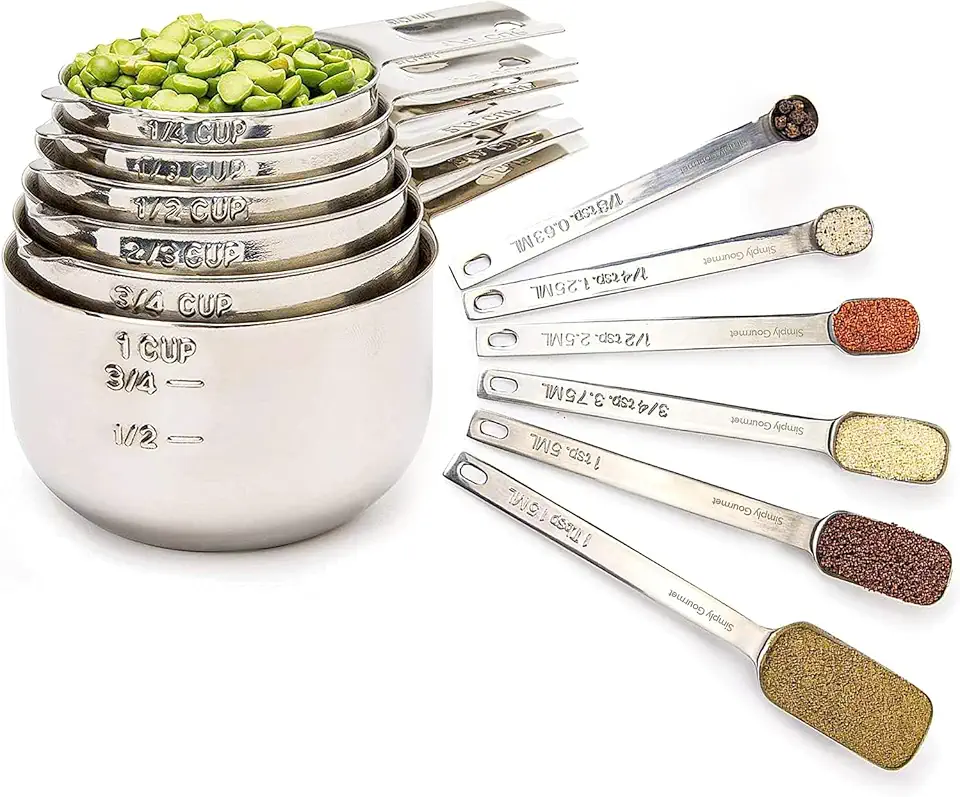 Simply Gourmet Measuring Cups and Spoons Set of 12, 304 Premium Stainless Steel, Stackable Cups Long Handle Spoons Fits Narrow Jars, Kitchen Gadgets for Liquid & Dry Ingredients Cooking Baking
$32.98
$45.99
View details
Prime
Simply Gourmet Measuring Cups and Spoons Set of 12, 304 Premium Stainless Steel, Stackable Cups Long Handle Spoons Fits Narrow Jars, Kitchen Gadgets for Liquid & Dry Ingredients Cooking Baking
$32.98
$45.99
View details
Prime
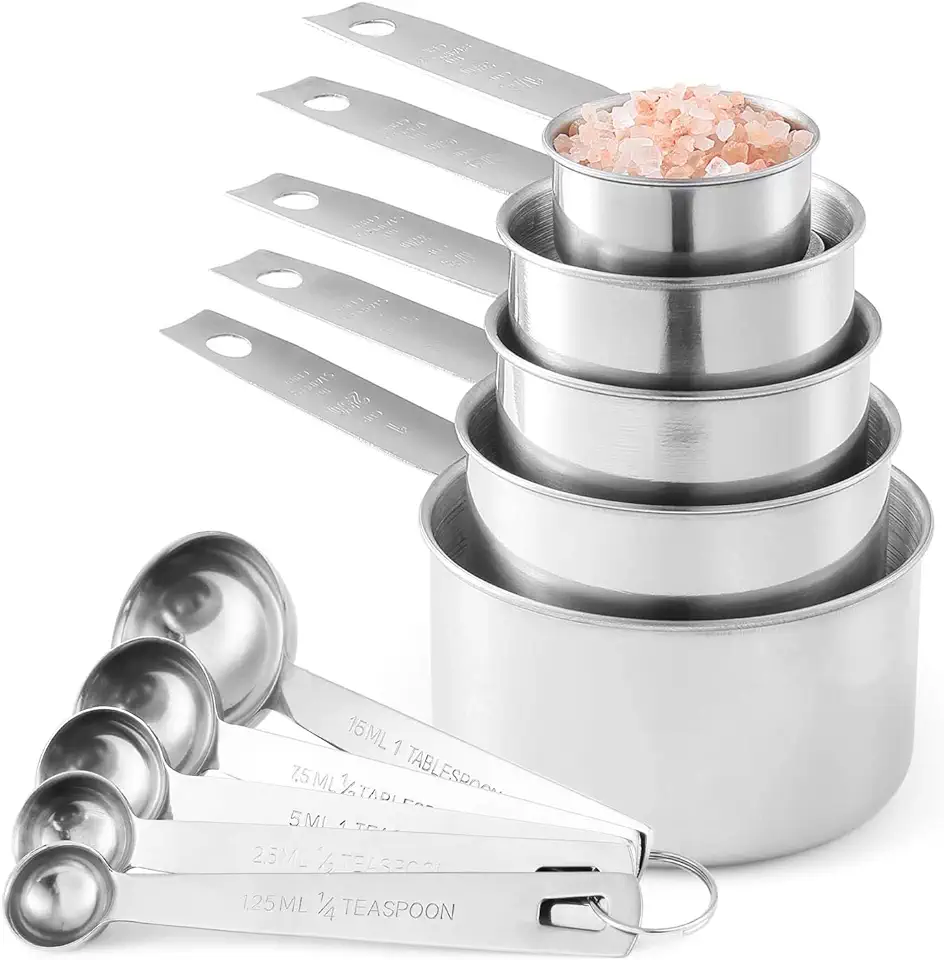 Stainless Steel Measuring Cups And Measuring Spoons 10-Piece Set, 5 Cups And 5 Spoons
$13.95
$17.98
View details
Stainless Steel Measuring Cups And Measuring Spoons 10-Piece Set, 5 Cups And 5 Spoons
$13.95
$17.98
View details
If you want fun shapes, have a cookie cutter handy. This will also add an adorable touch to your presentation!
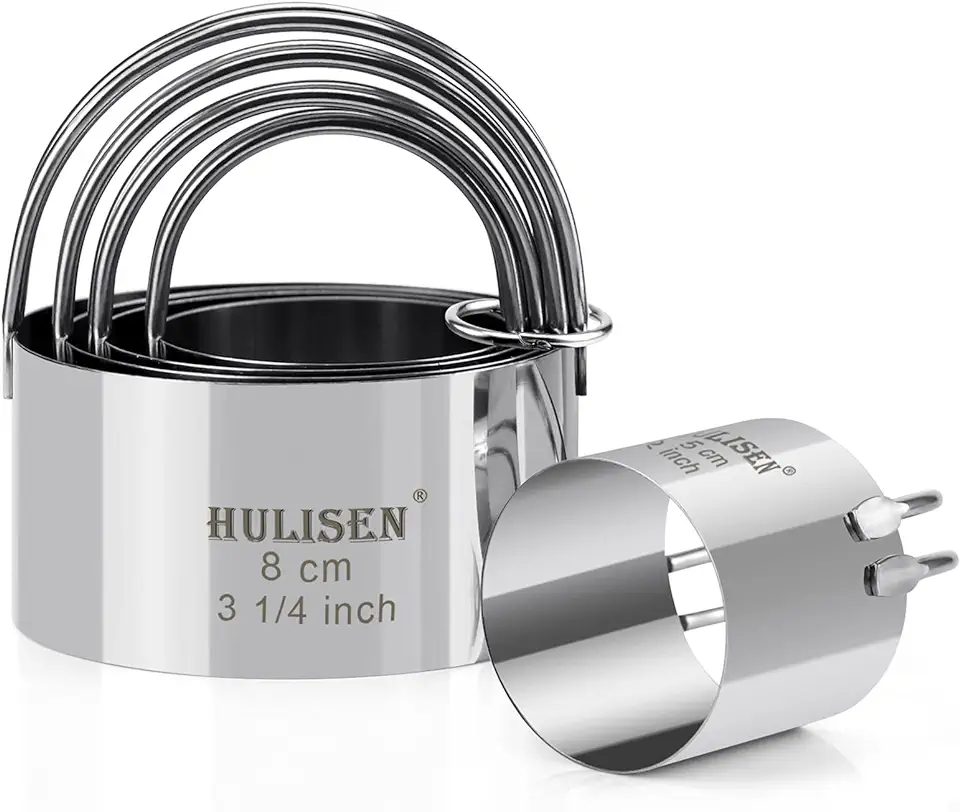 HULISEN Biscuit Cutter Set (5 Pieces/Set), Round Cookies Cutter with Handle, Professional Baking Dough Tools, Gift Package
$13.99
$15.99
View details
Prime
best seller
HULISEN Biscuit Cutter Set (5 Pieces/Set), Round Cookies Cutter with Handle, Professional Baking Dough Tools, Gift Package
$13.99
$15.99
View details
Prime
best seller
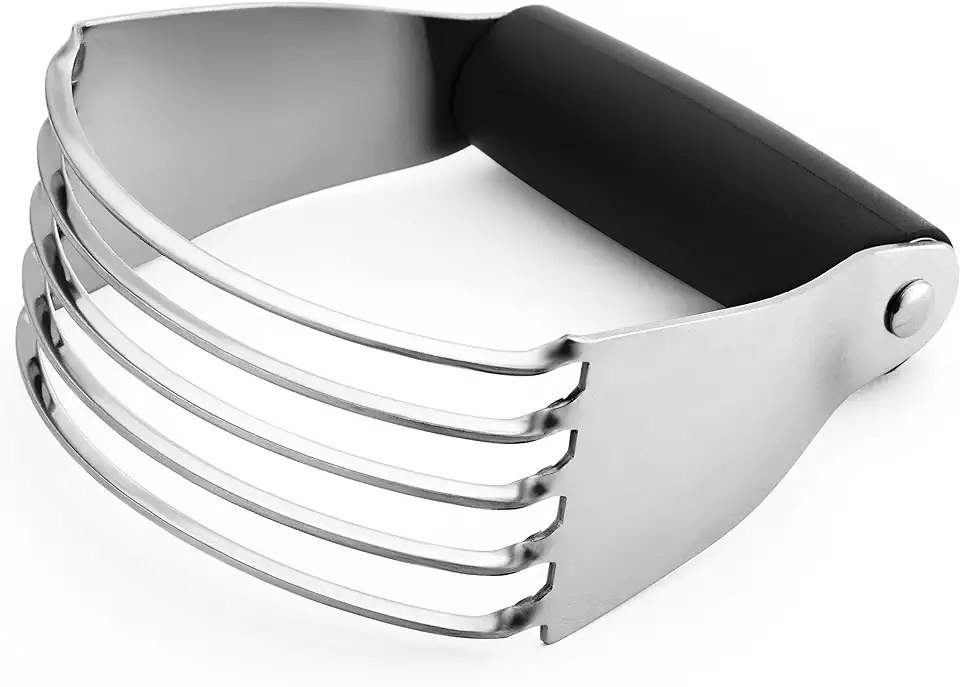 Spring Chef Dough Blender, Top Professional Pastry Cutter with Heavy Duty Stainless Steel Blades, Medium Size, Black
$8.99
View details
Prime
Spring Chef Dough Blender, Top Professional Pastry Cutter with Heavy Duty Stainless Steel Blades, Medium Size, Black
$8.99
View details
Prime
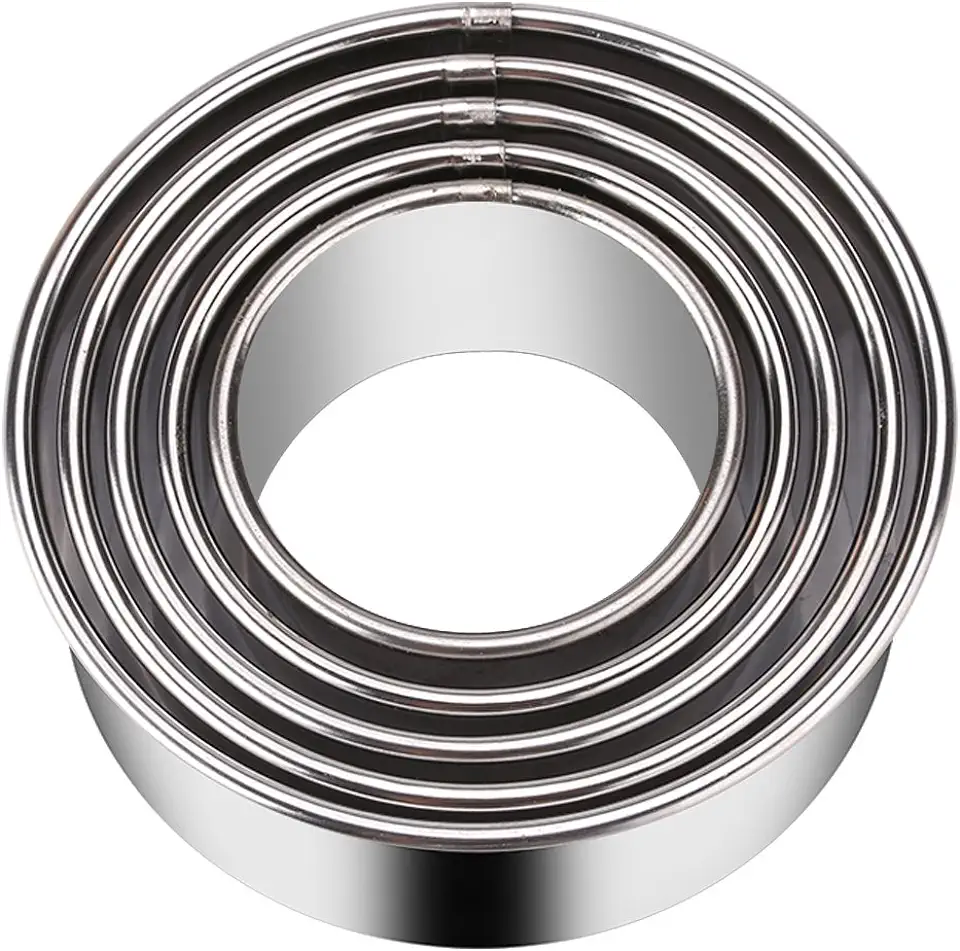 Biscuit Cookie Cutters Set,Stainless Steel Circle Round Cookie Biscuit Cutters in Graduated Sizes Shape Molds for Pastries Doughs Doughnuts, 5 Pieces
$5.99
$7.99
View details
Biscuit Cookie Cutters Set,Stainless Steel Circle Round Cookie Biscuit Cutters in Graduated Sizes Shape Molds for Pastries Doughs Doughnuts, 5 Pieces
$5.99
$7.99
View details
Variations
Vegan Version: Swap butter for an equal amount of coconut oil or vegan butter, and use flaxseed meal mixed with water as a binding agent instead of eggs. These changes will keep your cookies plant-based but just as flavorful! 🌱
Faq
- What if my cookies spread too much while baking?
Check your butter temperature – if it's too soft, the cookies may spread more than desired. Chill the dough for about 30 minutes before baking.
- How do I know when the cookies are done?
Look for the edges to be set and the tops to appear slightly matte. They will continue to firm up as they cool!
- Can I freeze the dough?
Absolutely! You can freeze cookie dough for up to 3 months. Just thaw in the fridge overnight before baking.
- What can I add to enhance the flavor?
Consider adding vanilla extract or a pinch of cinnamon for that extra flavor kick! Nuts or chocolate chips make for great additions too!
- How can I store the cookies properly?
Keep them in an airtight container at room temperature for up to a week. You can also refrigerate them to extend freshness.
- What’s the best way to soften butter quickly?
Cut your butter into small cubes and let it sit at room temperature for about 15 minutes, or use the microwave in short bursts (5 seconds) on low power.


